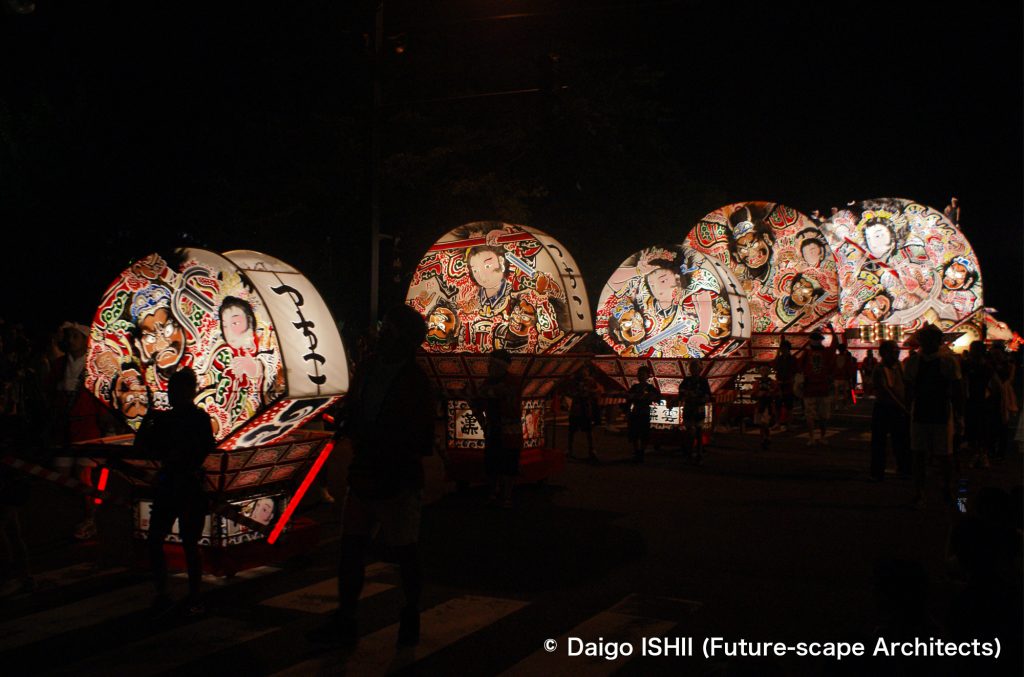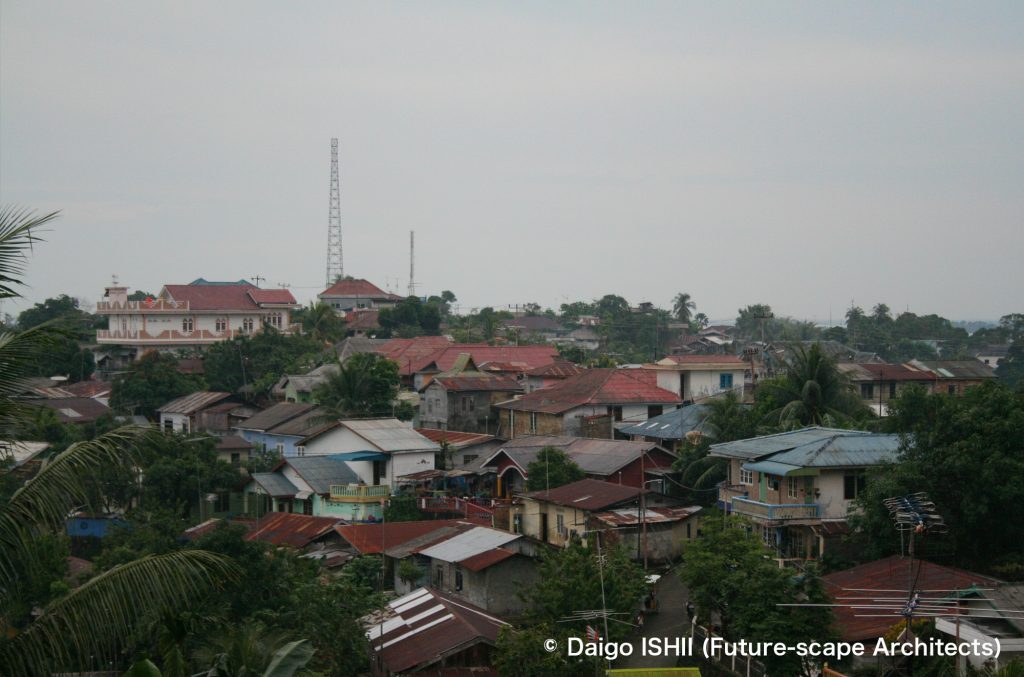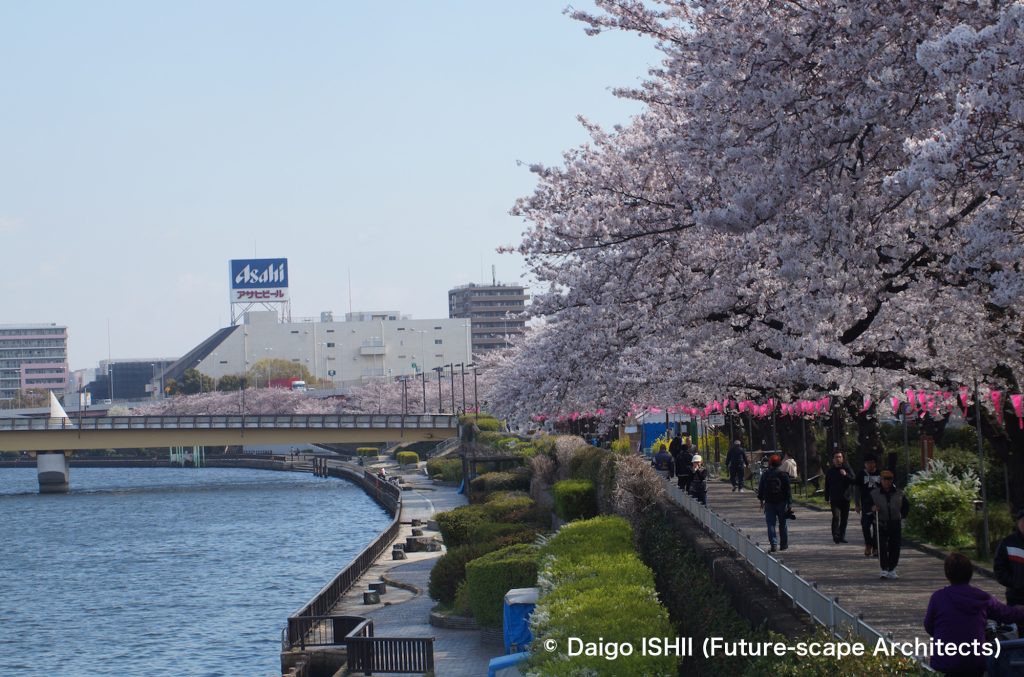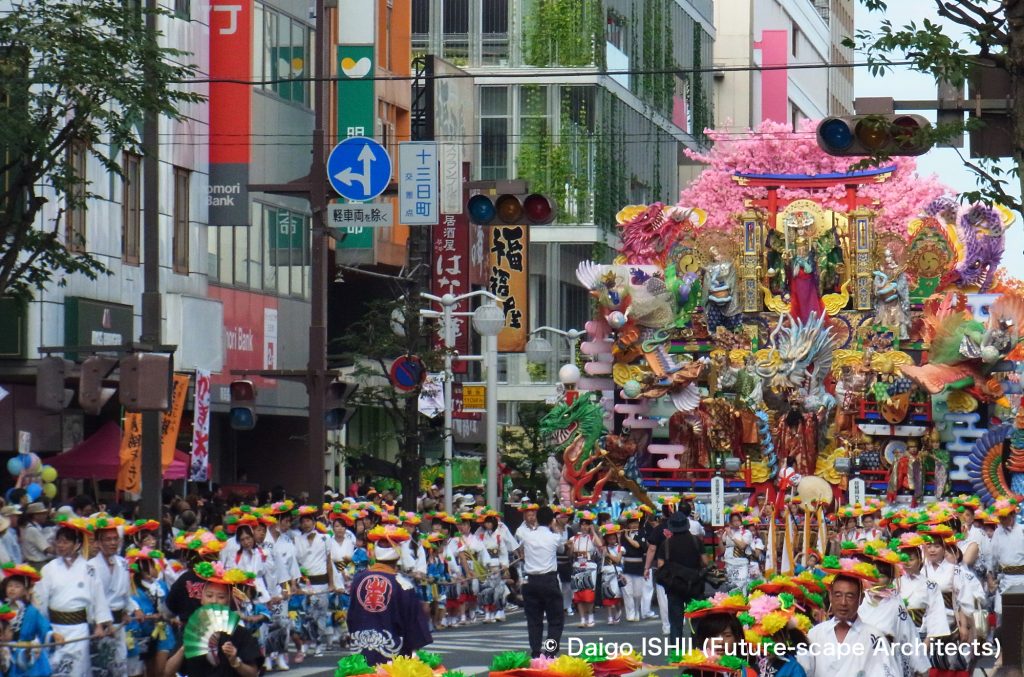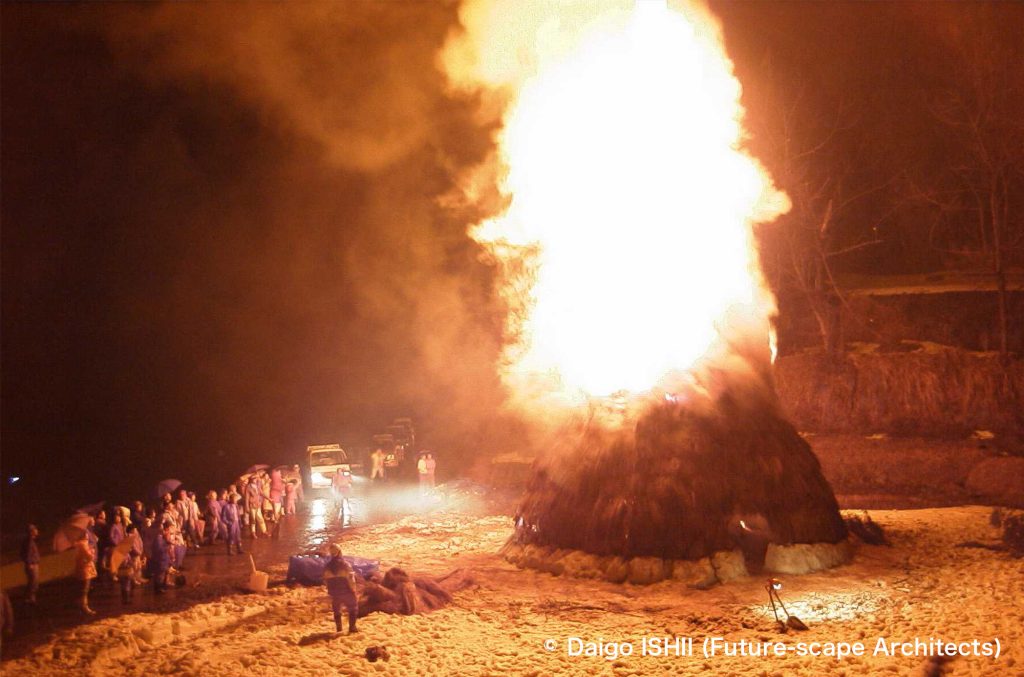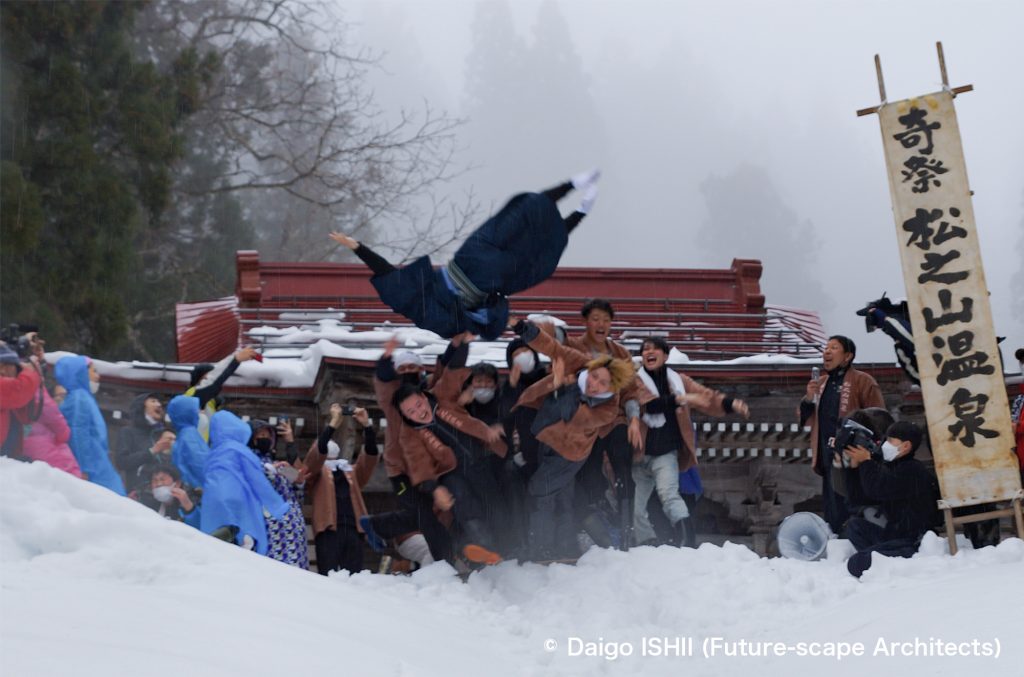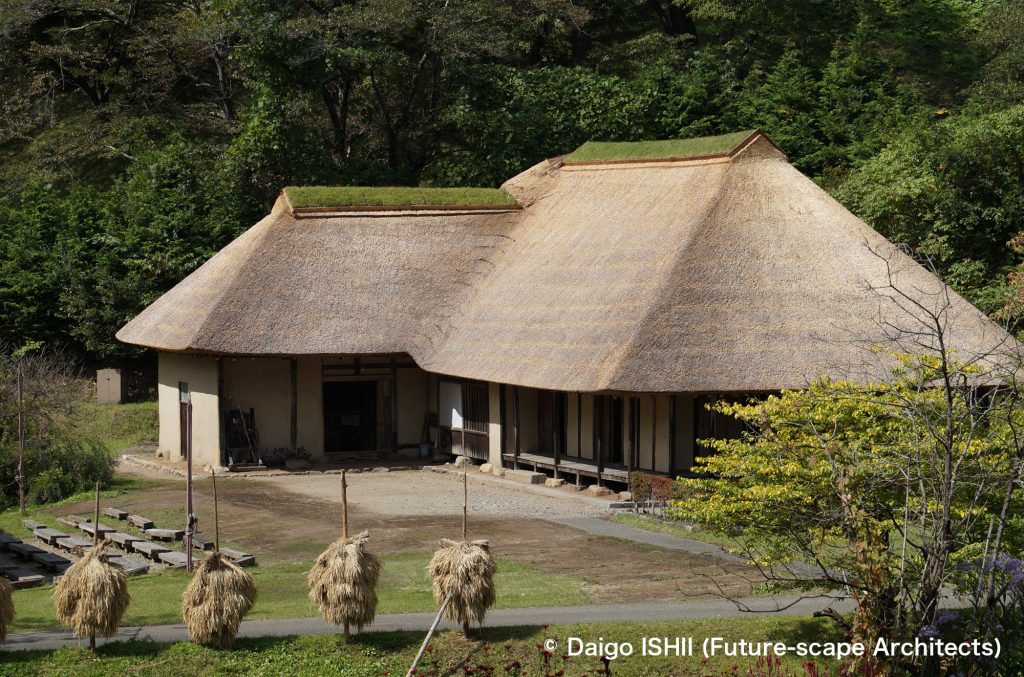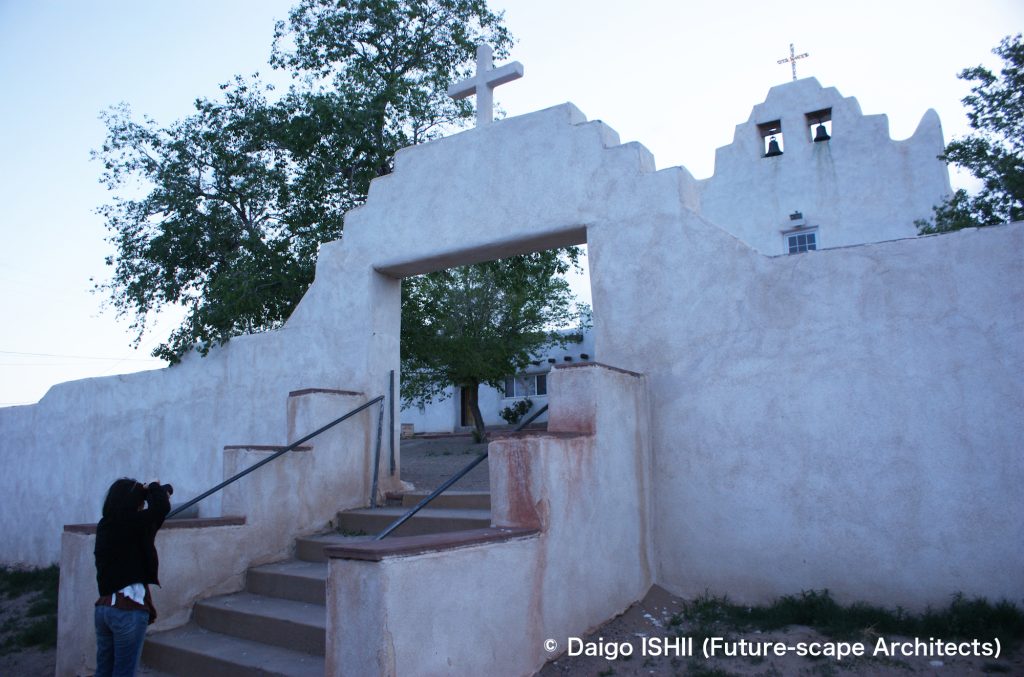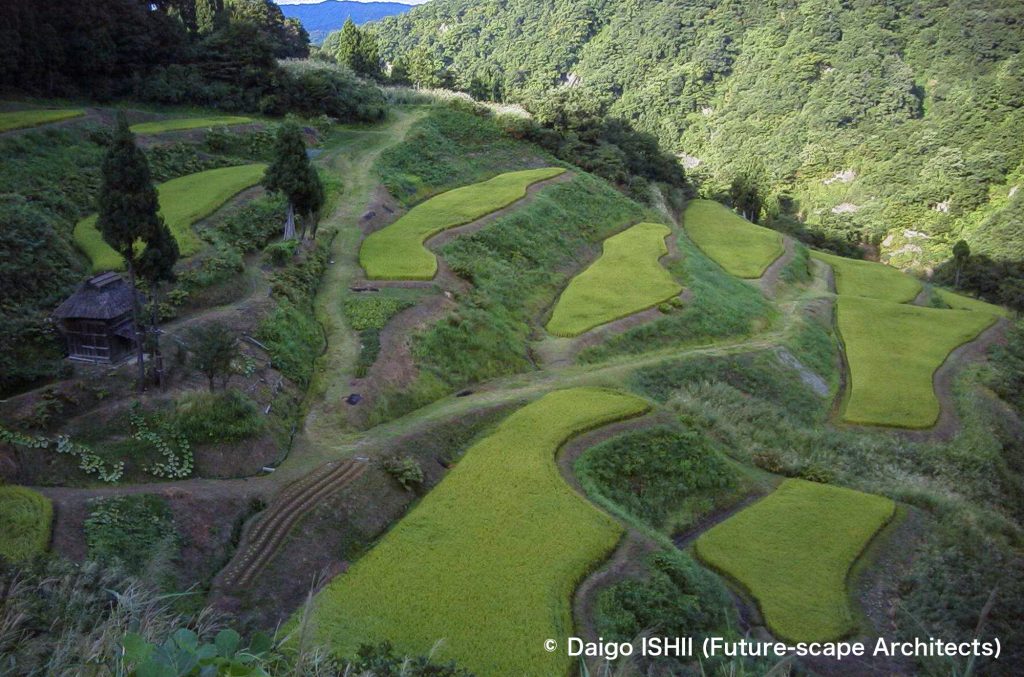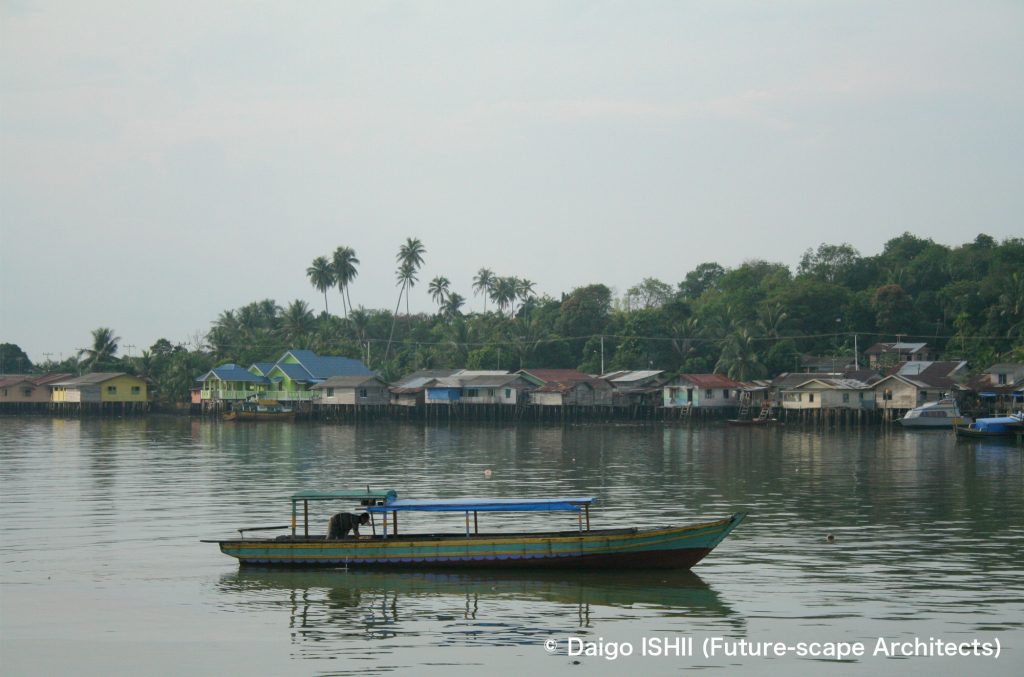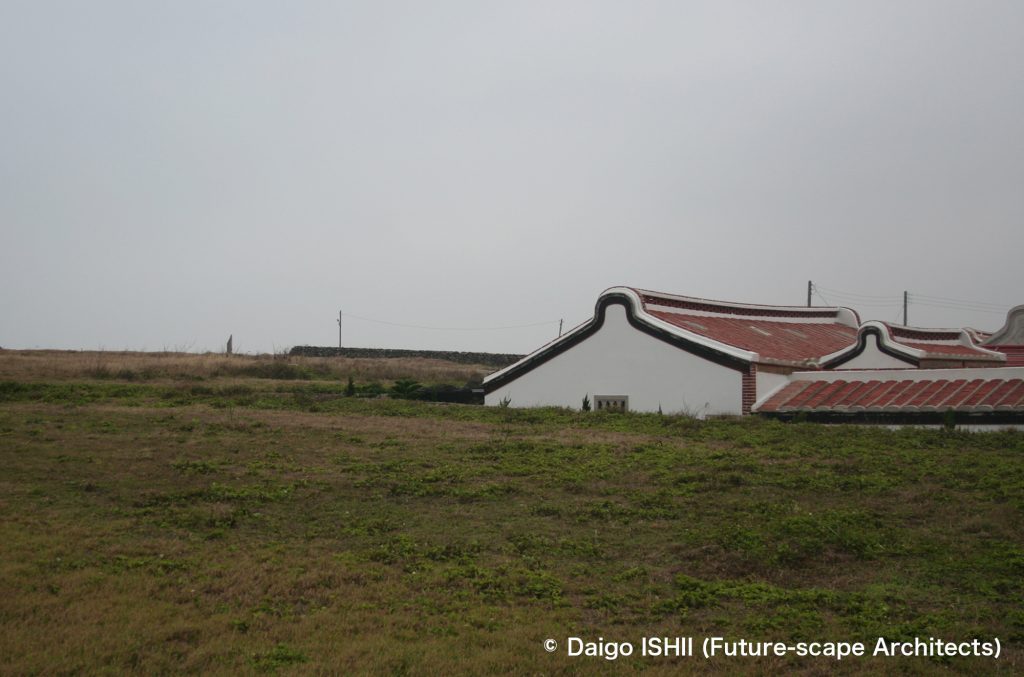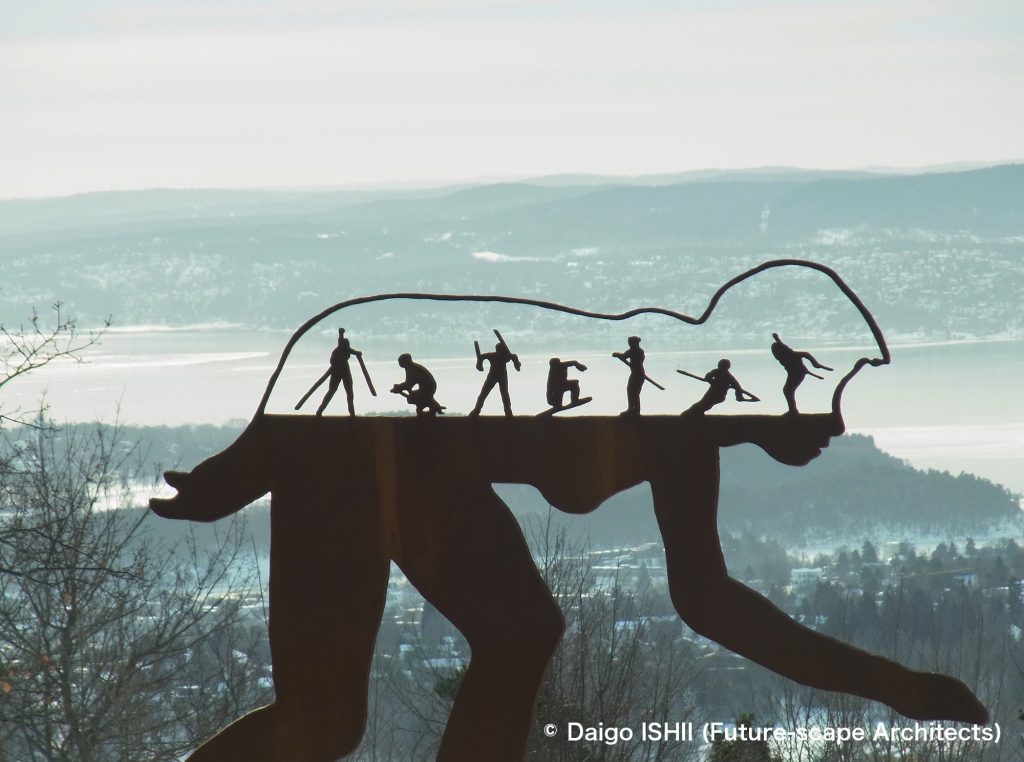First of all, I have to apologize to Goshogawara citizen. Compared with Aomori city with population of 300,000 people, Hirosaki city with 180,000, Gosyogawra city has only population of 60,000 people. It was a matter of course that I had imaged the festival in Goshogawara, which population and economic scale was less than other two cities, must be inferior in scale.
Far from it ! I reflected on that assumption when I saw the festival actually. Its wonderfulness was not in the least inferior to Aomori and Hiroshi.
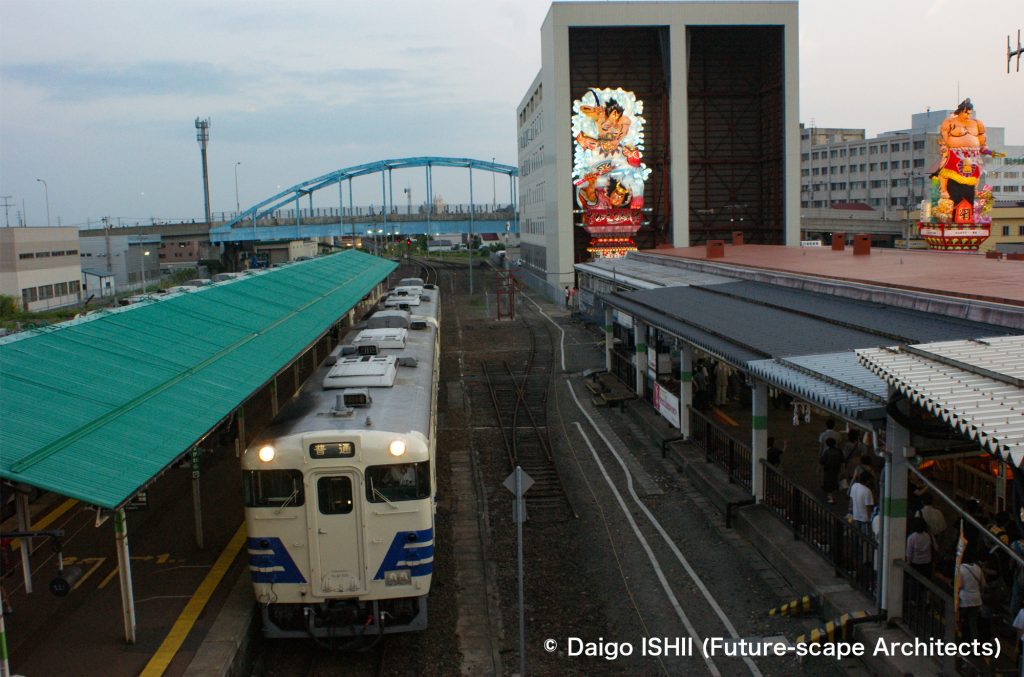
At the moment when the train arrived at the Goshogawara station, and passengers finished going up the stairs to the overpass, they turned their eyes on the outside of the window all at once. On the skyline of the town, Tachi-Nebuta floats were protruding its face. Here, first, everyone was heart-gripped. The warehouses for two Tachi-Nebuta floats were in front of the station, so it was a chance to see the last adjusted float close by. Even if I bent the neck 90 degrees, I couldn't understand the whole figure. Anyway it was huge.
At 7:00 p. m. when the sky was still somewhat bright, Tachi-Nebuta floats started moving. It is rare to encounter with a gigantic robot of Japanese comic like Mazinger Z (Tranzor Z) or Tetsujin 28-go (Iron Man No. 28) in the city. However, if they had appeared in the town, they must have looked like this.
According to Wikipedia, the gigantic robot of Tetsujin 28-go is 20 meters high and weighs 23 tons. Meanwhile, a Tachi-Nebuta float is 23 meters high and weighs 20 tons, so they are similar. However, what does it mean ? Because the weight of a Tachi-Nebuta float, which frame was produced with light iron and wooden and was covered with a Japanese paper, is almost the same as the gigantic robot of Tetsujin 28-go covered with iron armor. During World War II, Japan develped a fighter aircraft made from bamboo. The gigantic robot Tetsujin 28-go, which was developed in the 1960s with memories of the war, might be produced with a bamboo frame that applied that technology.
Compared to the Aomori Nebuta and the Hirosaki Neputa, the Tachi-Nebuta in Goshogawara was simpler. It had no small floats. A Musical accompaniment followed a drum float, dancers came at the next, and behind them was a Tachi-Nebuta float. That parade composition was enough to highlight the overwhelming Tachi-Nebuta float. It was in 1998 that the festival restarted after the old drawing of a Tachi-Nebuta float had been discovered in 1993. Because of its short history compared to Aomori and Hirosaki, the flexibility and variety of dance were the character of the Tachi-Nebuta. Some teams jumped with one foot like the Aomori Nebuta, and others danced with traditional folk song style.
Another thing different from Aomori and Hirosaki was to put the electric wire in the parade route underground. So, Nebula floats didn't get caught on the wire though floats were high. The Tachi-Nebuta float induced the townscape of Goshogawara. However, the reason why the Tachi-Nebuta festival, whcih had remained until the 1920’s, had been abandoned was because electric wire was stretched due to the spread of electricity. The rise and fall on the festival was related to the townscape. In that sense, the arcade in the central shopping area didn't overtake the new change. The arcade was usual, and the height was similar to an arcade in any towns. In Aomori and Hirosaki, such arcade didn’t hinder the viewing of Nebuta. Meanwhile, in Goshogawara, spectators couldn’t see the head of Tachi-Nebuta float since the arcade roof cut it. However, the scenery that spectators looked up a float putting their face on a roadway from a sidewalk was interesting.
At 9:00 p.m., the festival ended with a signal gun, but some of dancers began to dance madly over again. In the festival, Yan-papa and Yan-mama (Yankee-papa and mama : young parents with motorcycle gang style) were outstandingly active, but, at the end of the festival, their energy seemed to have exploded. It is okay to release energy for a while in order to cool down the exhilaration of the festival once a year. When I thought such thing, the jabbing started. They realeased energy too much.
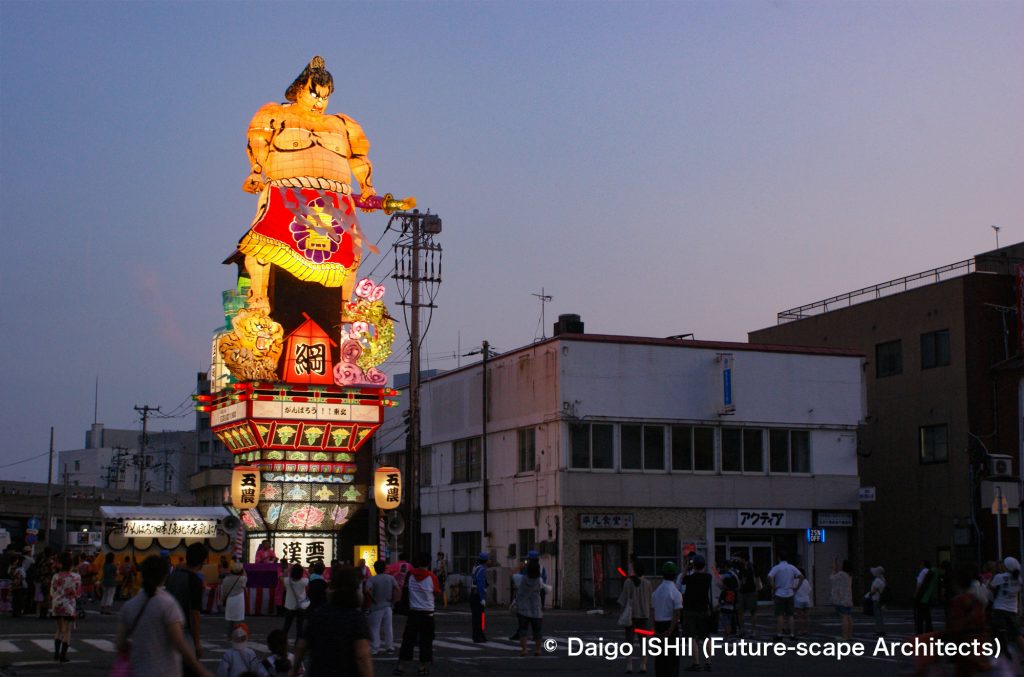
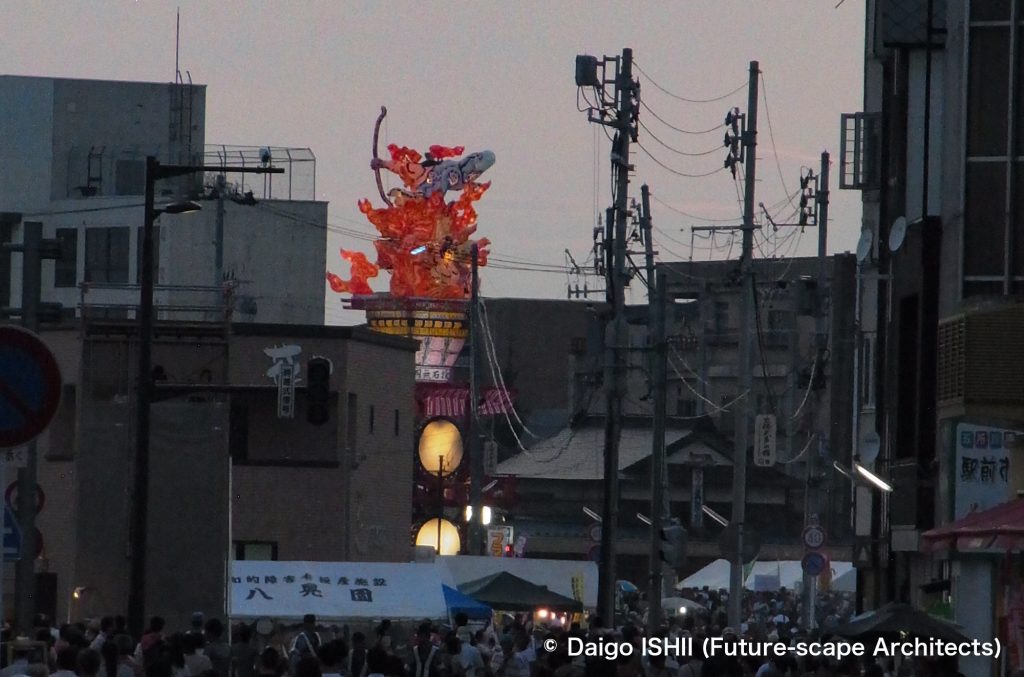
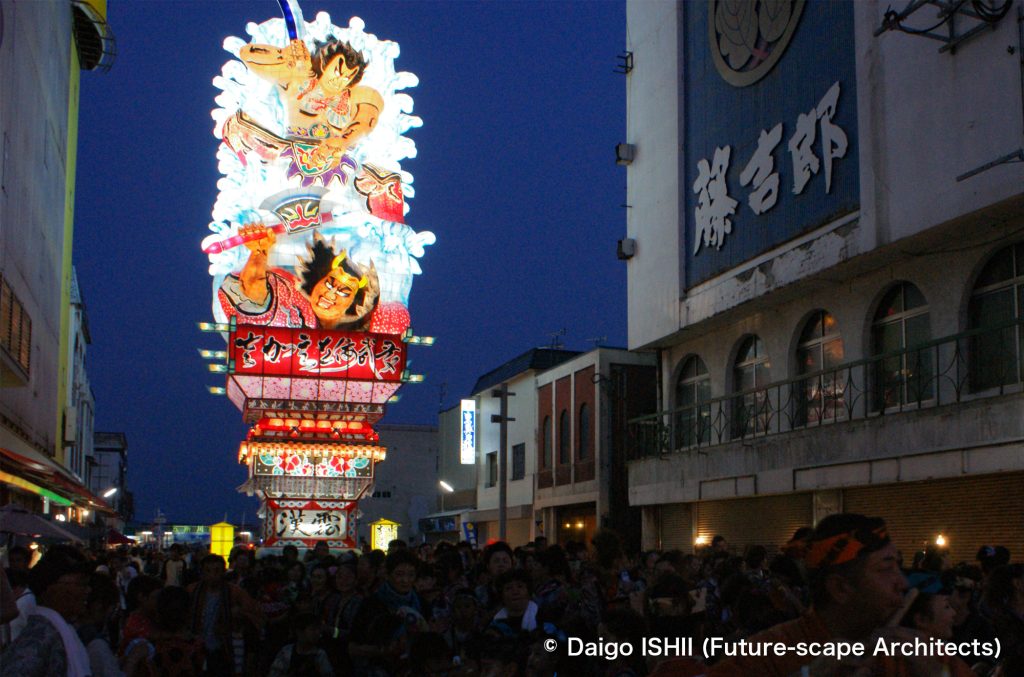
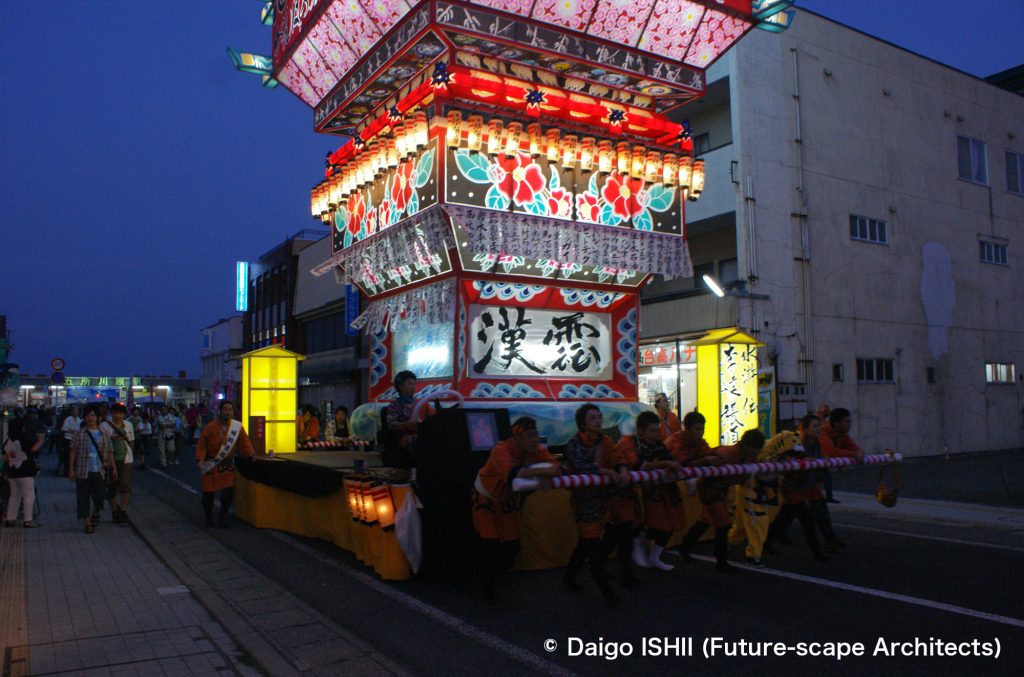
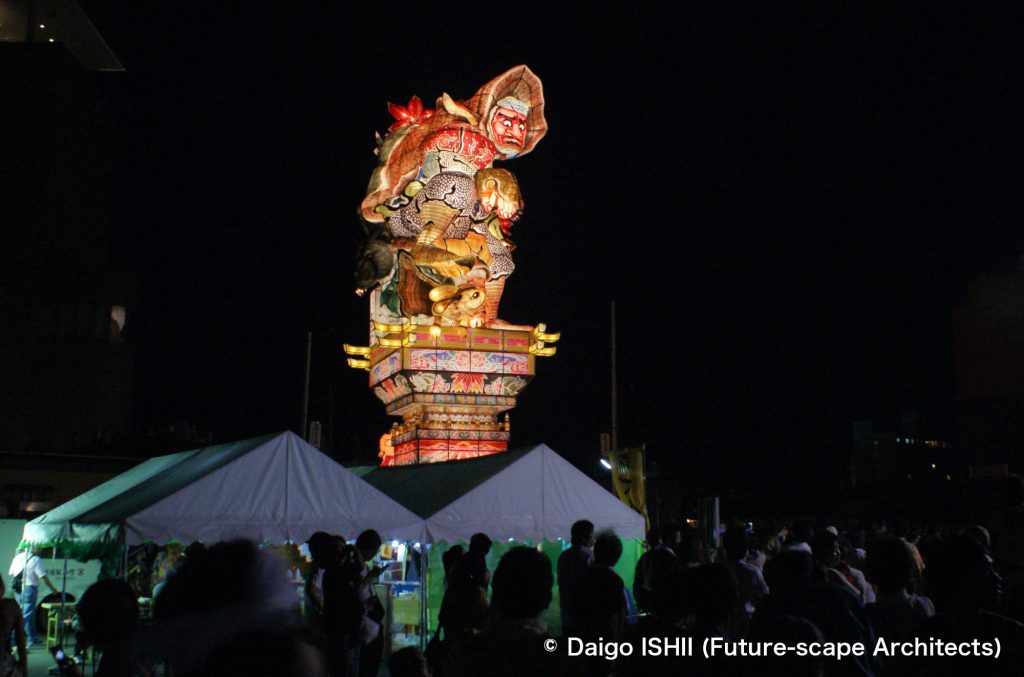
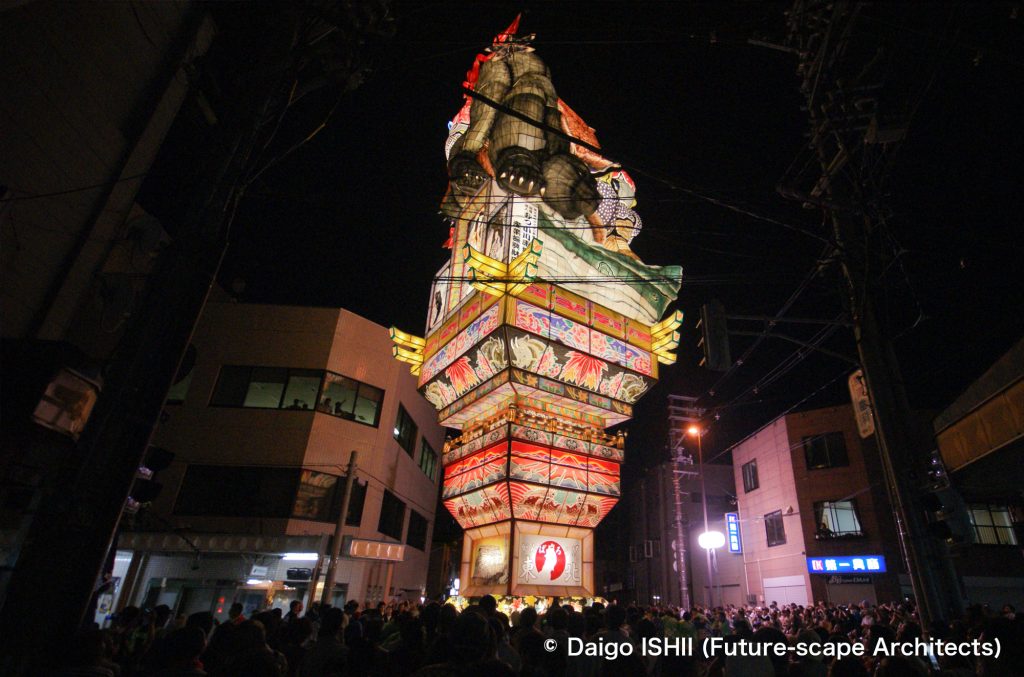
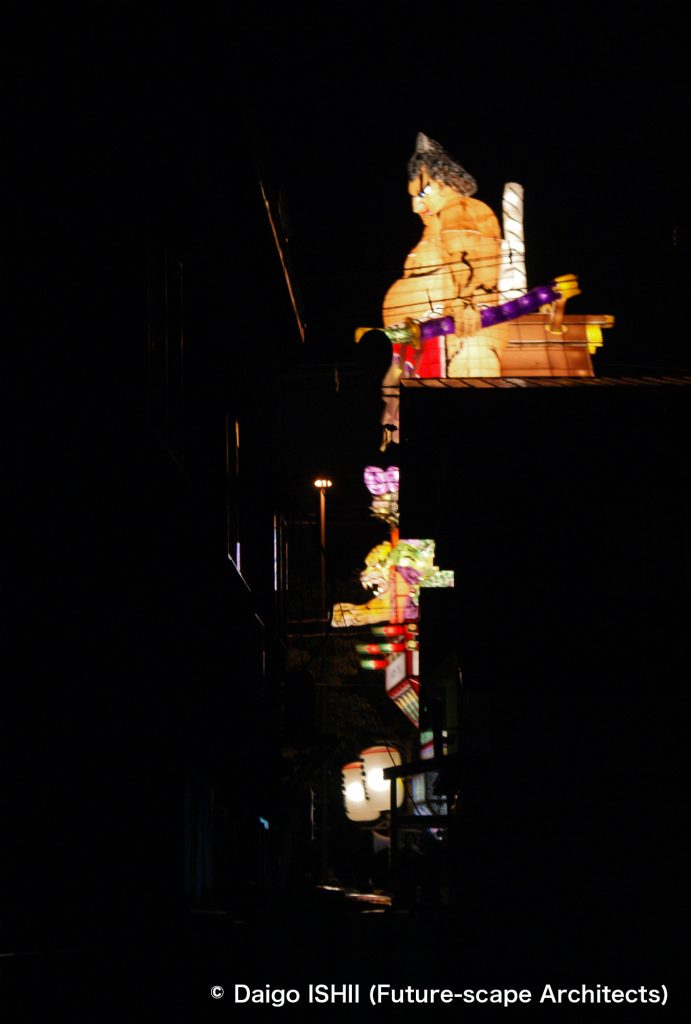
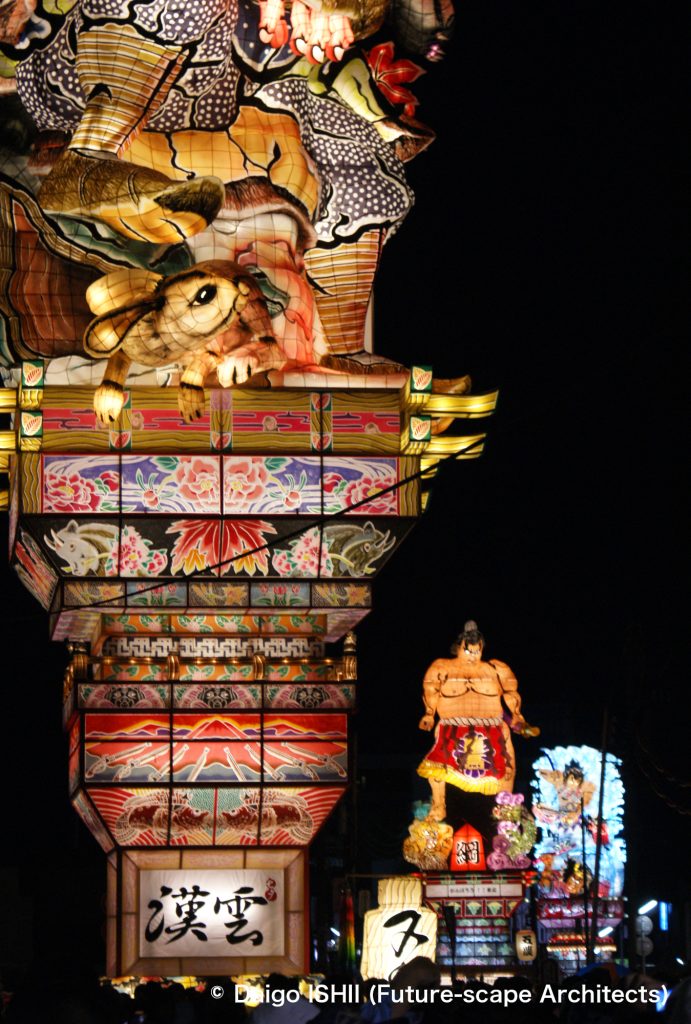
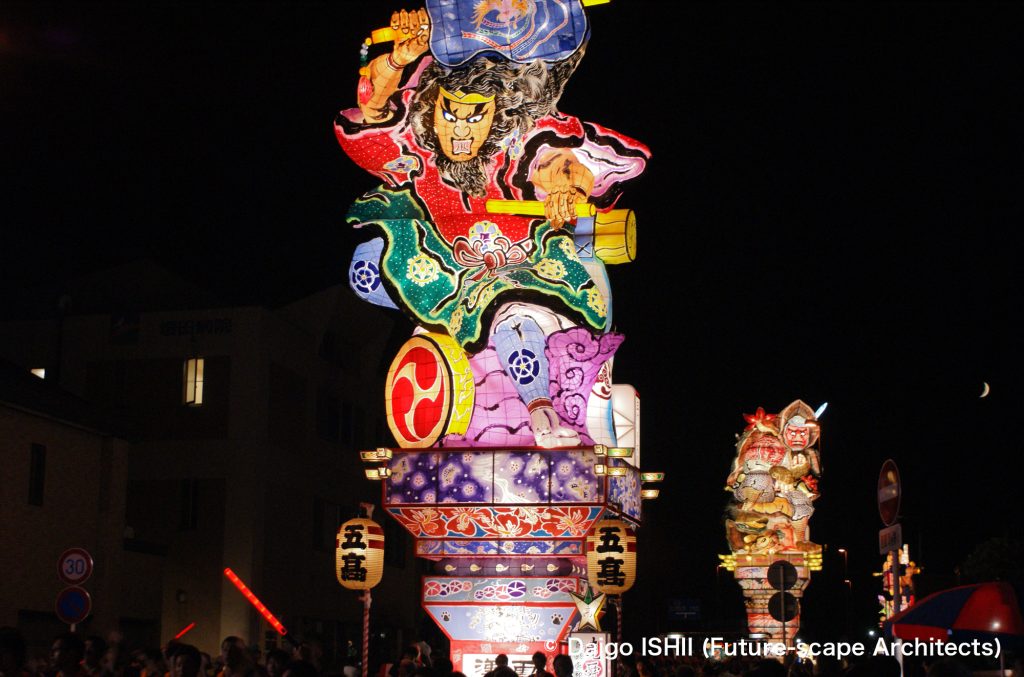
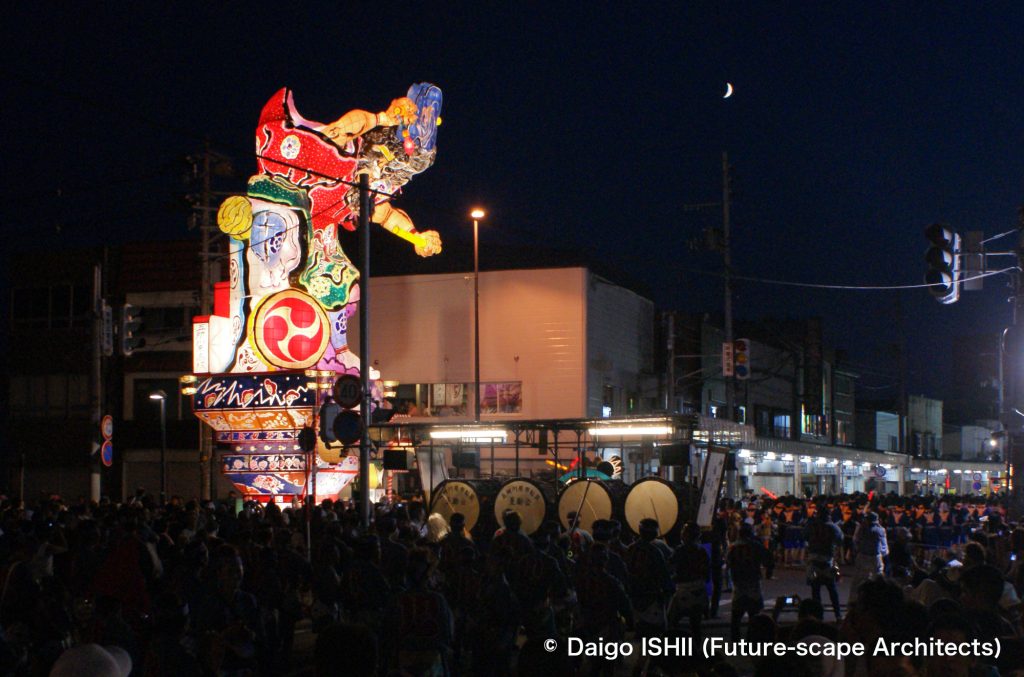
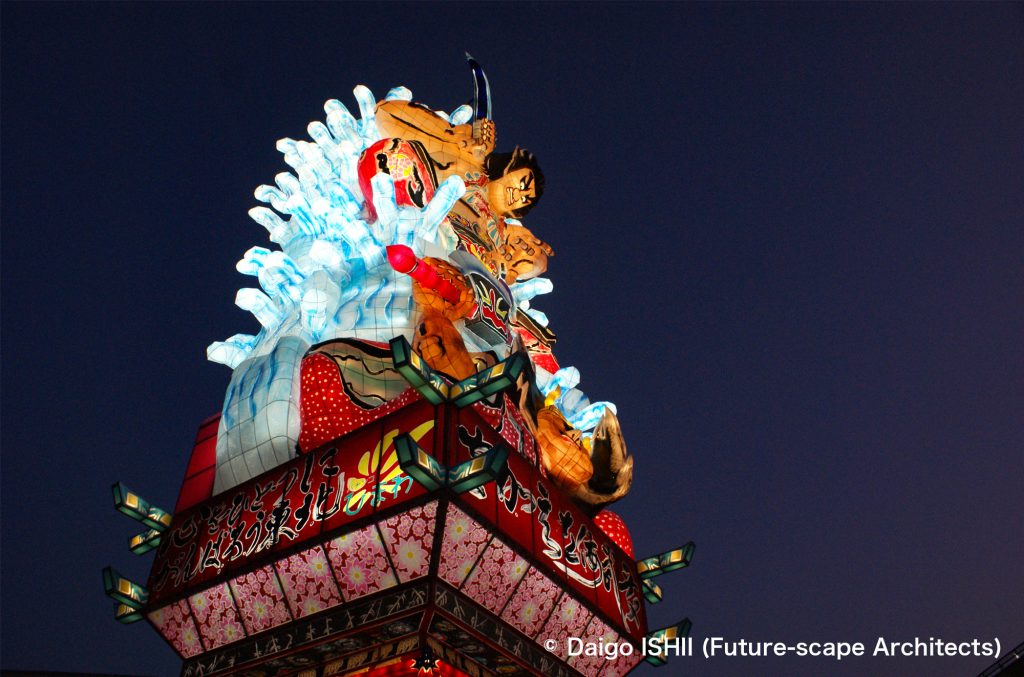
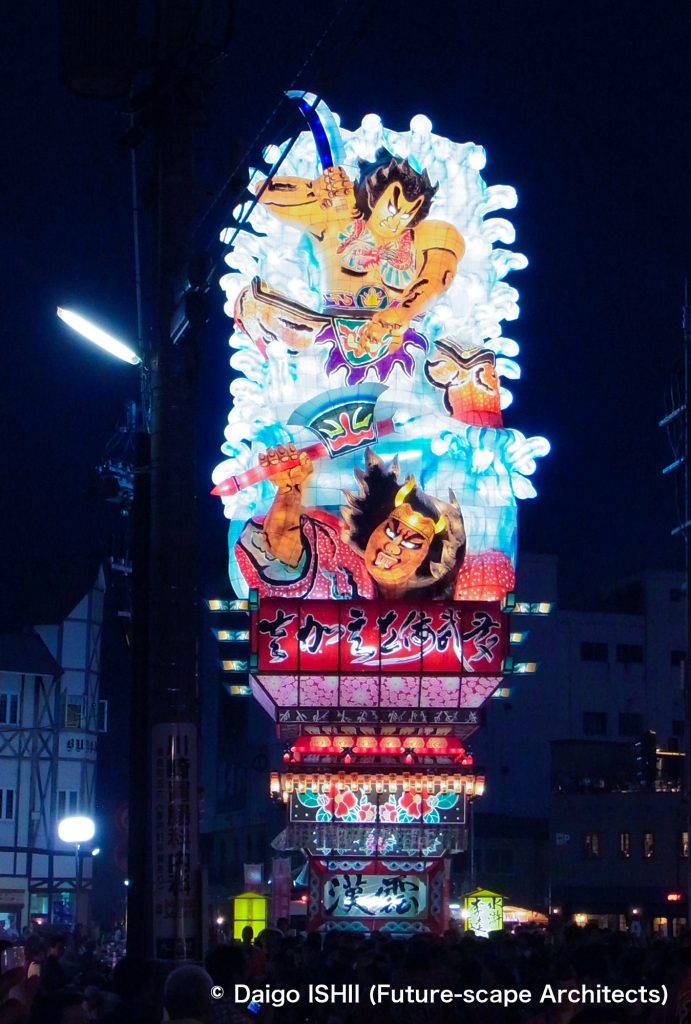
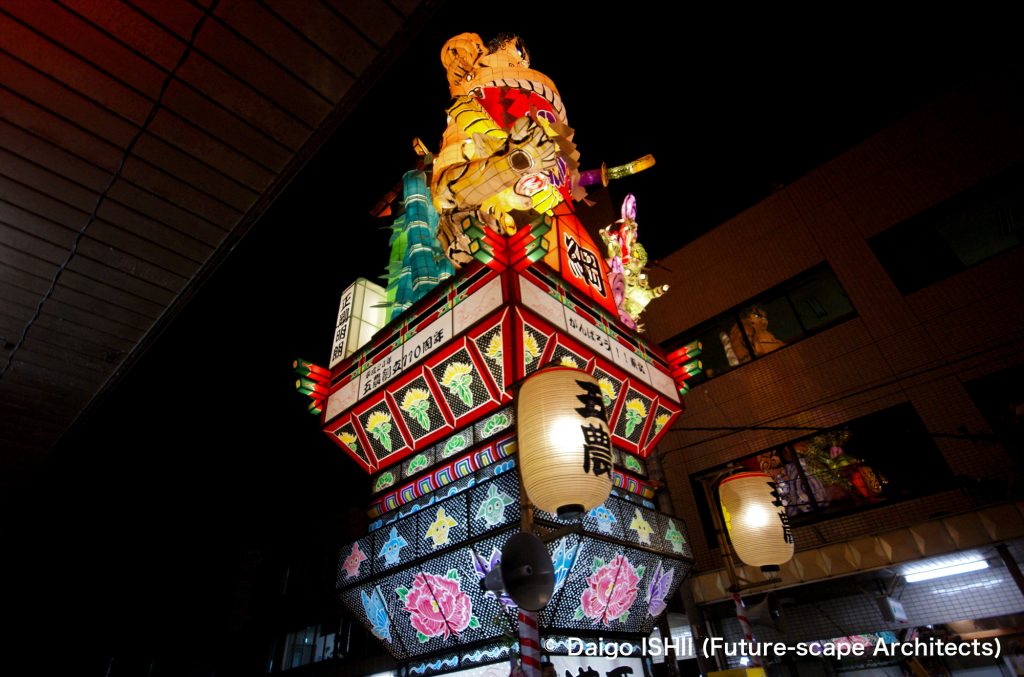
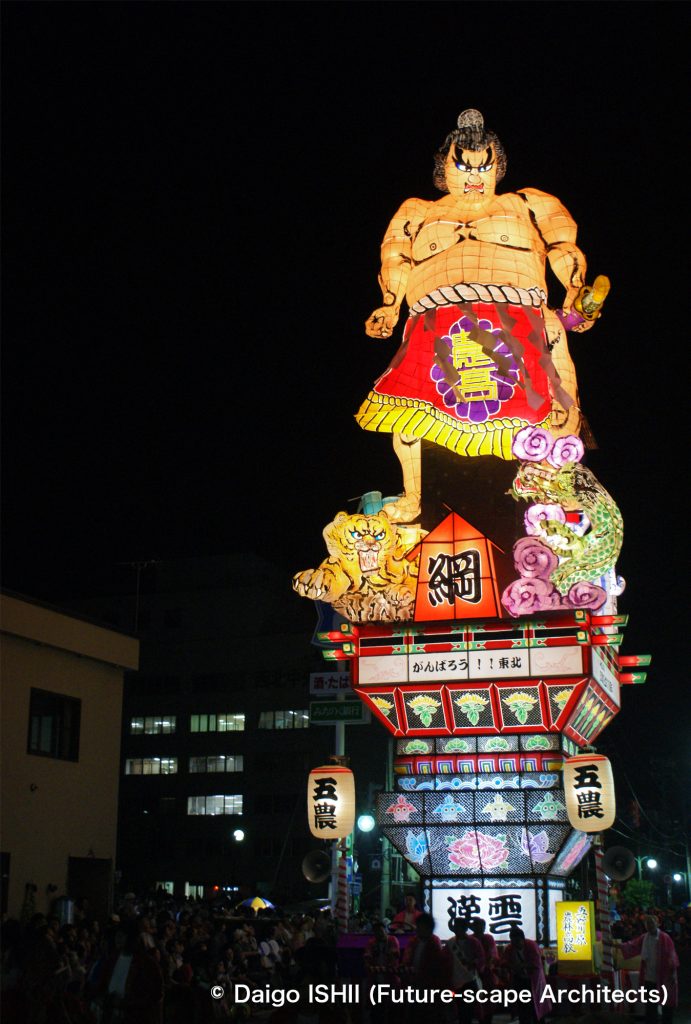
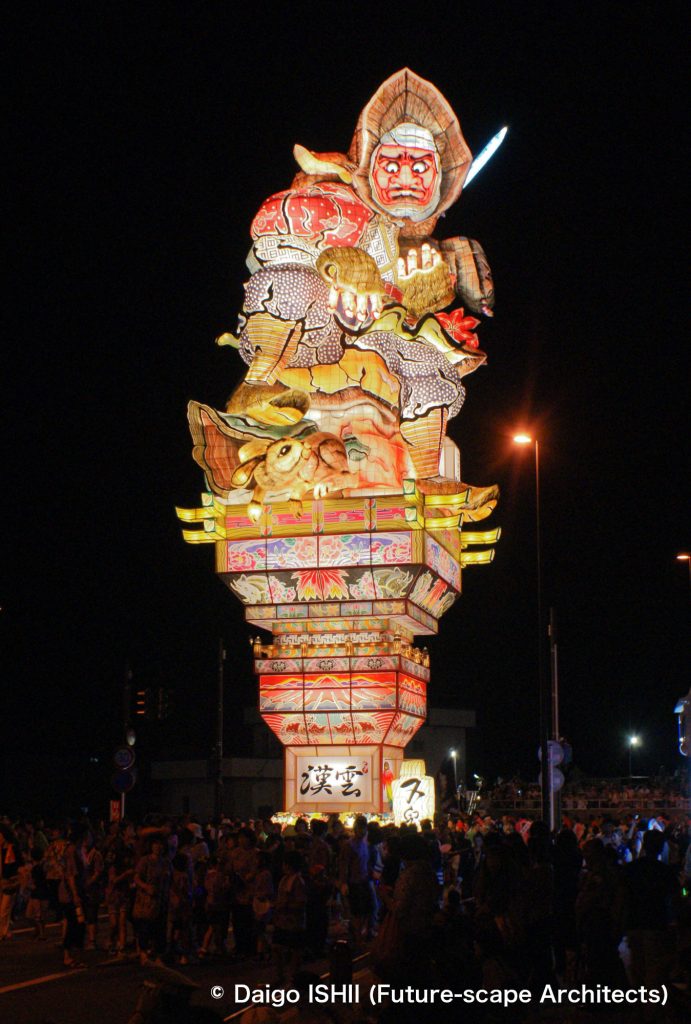
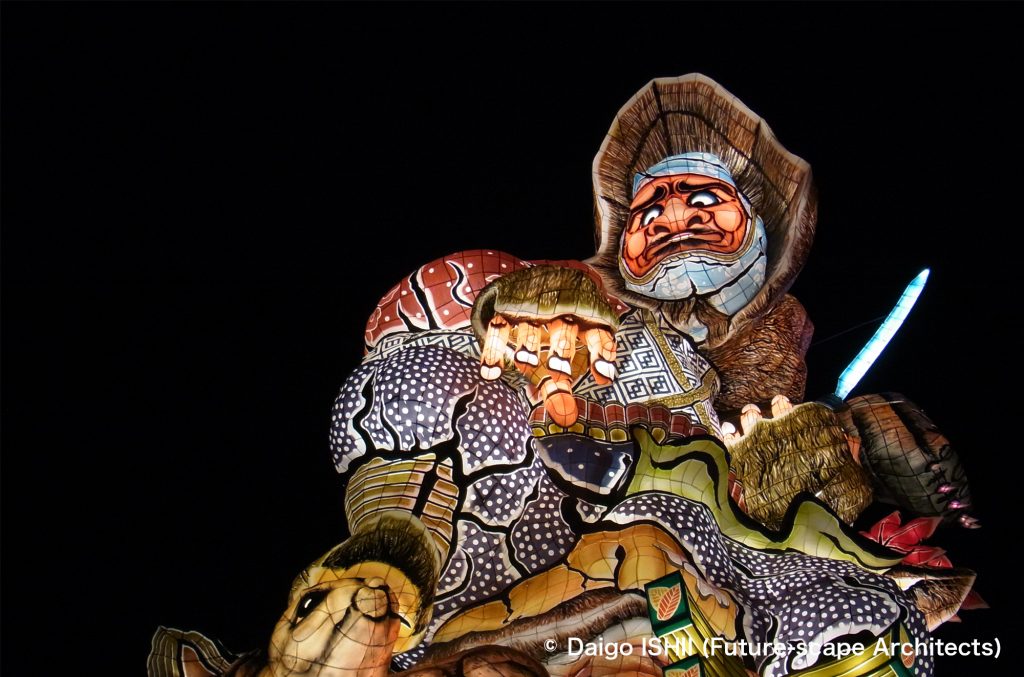
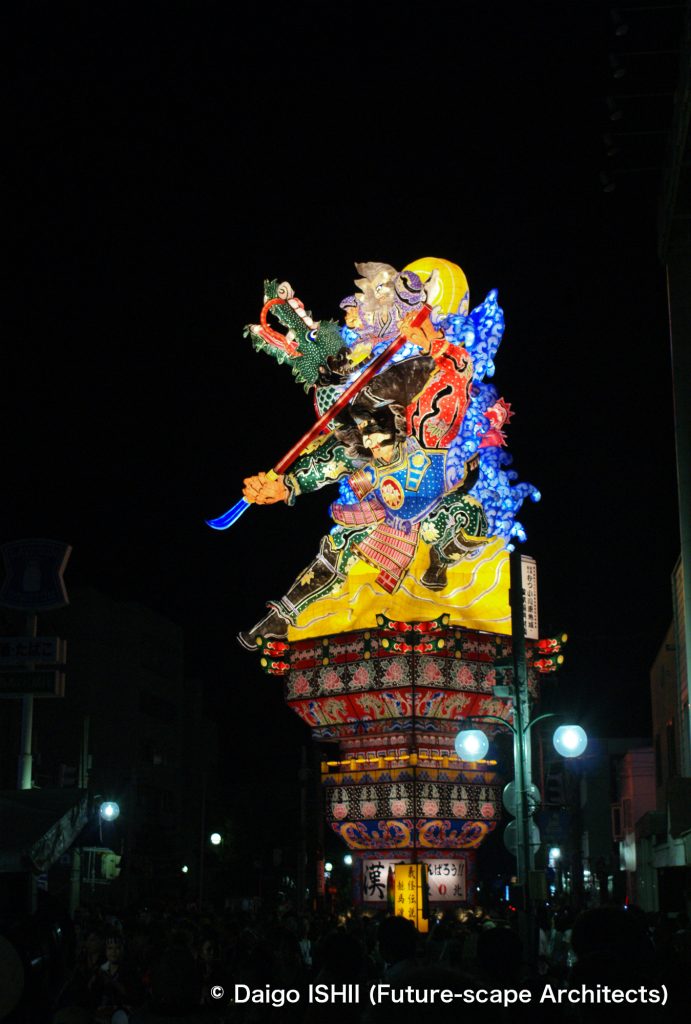
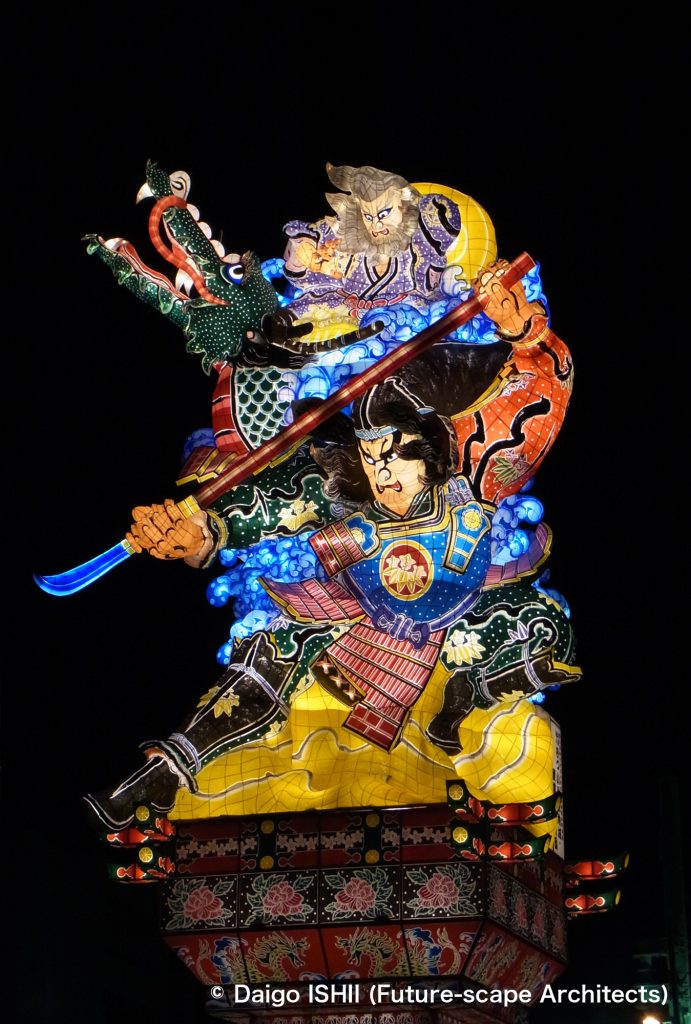
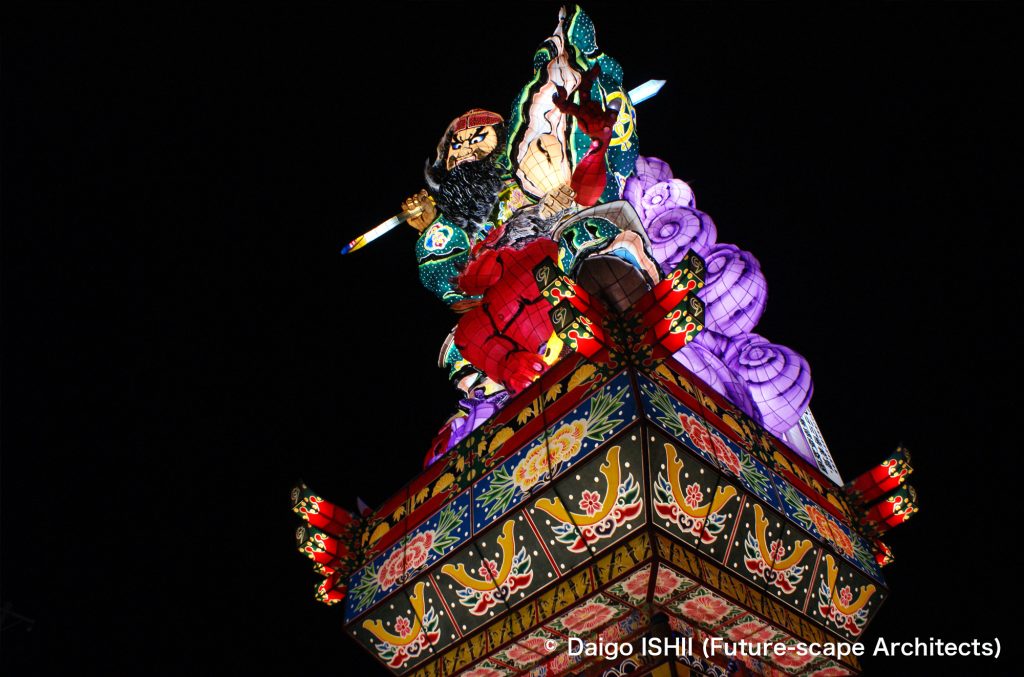
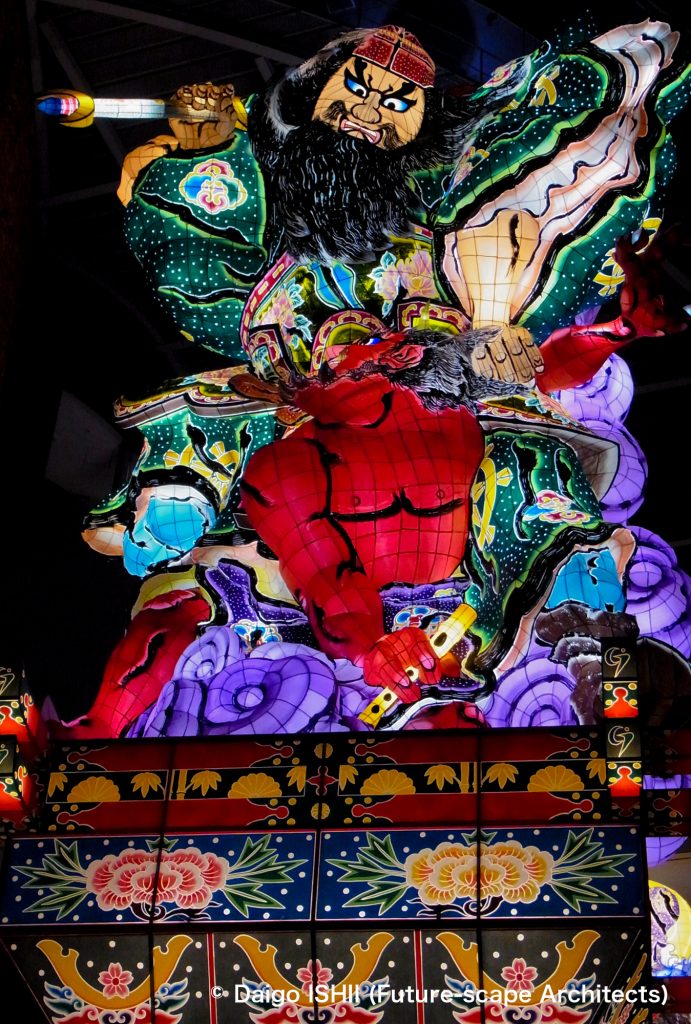
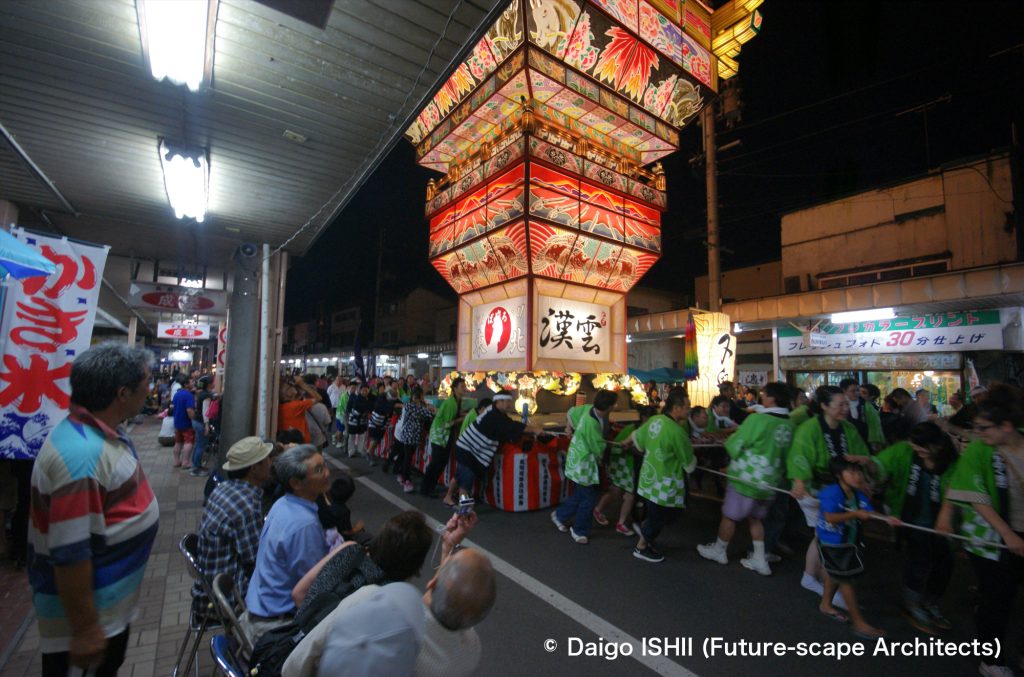
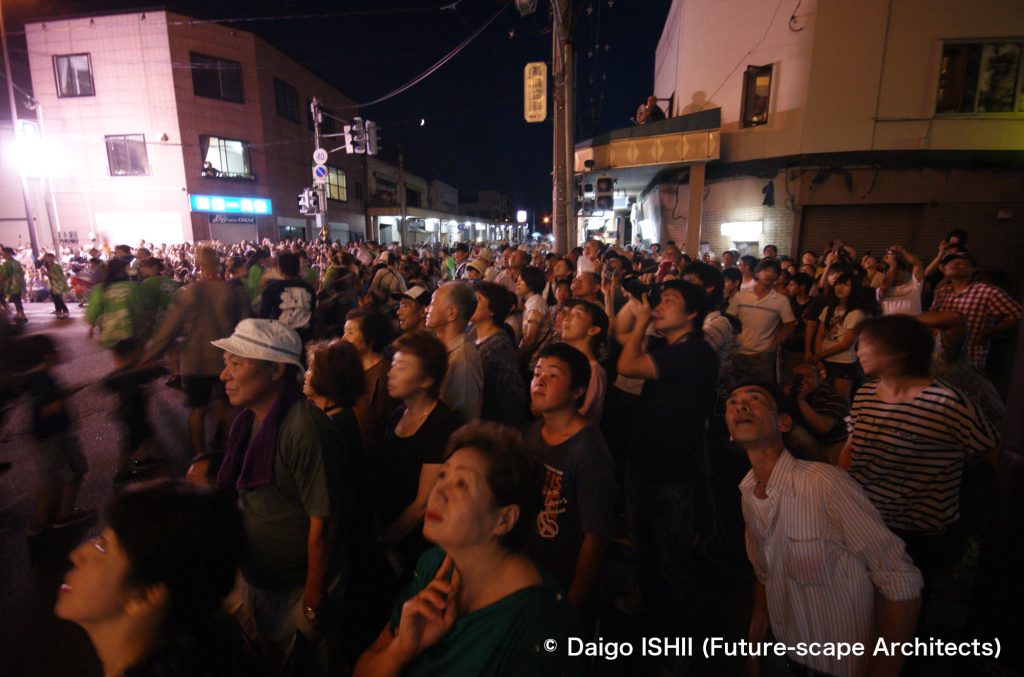
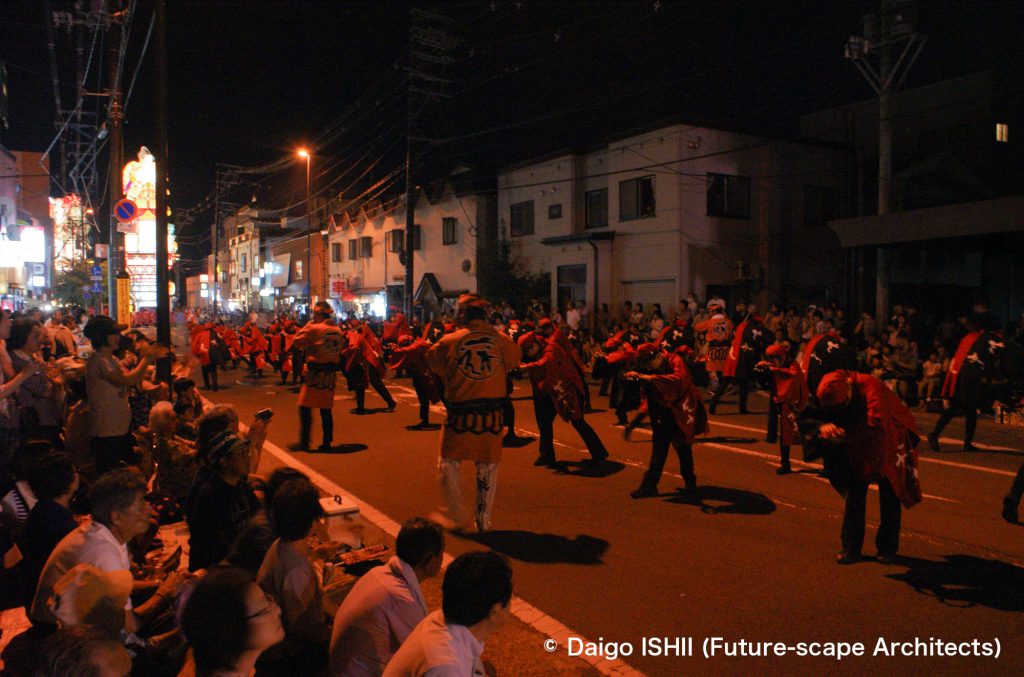
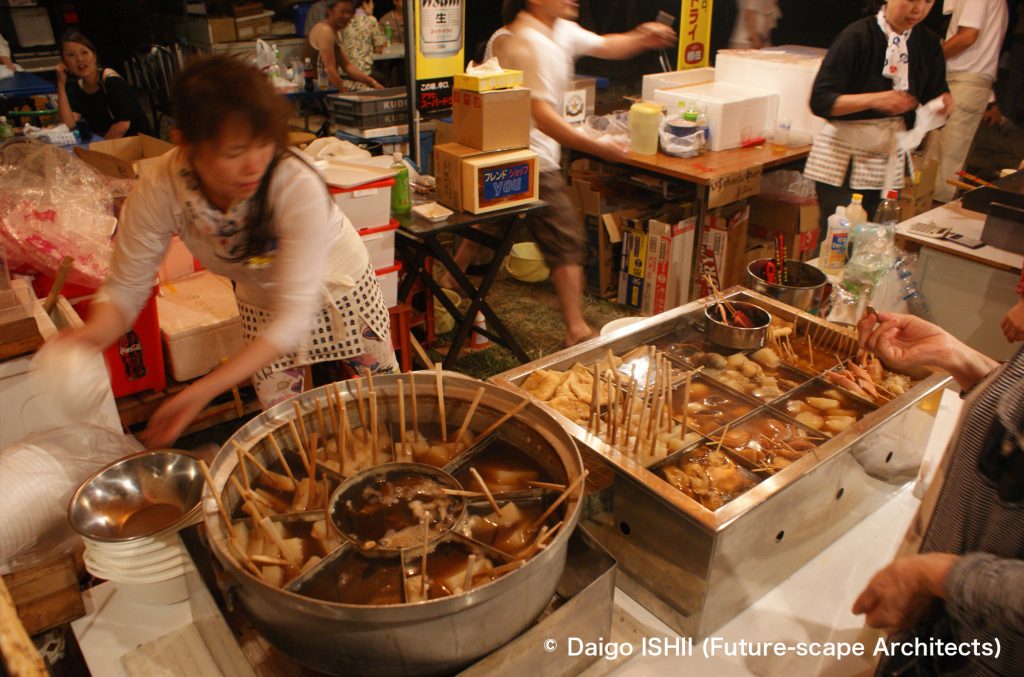
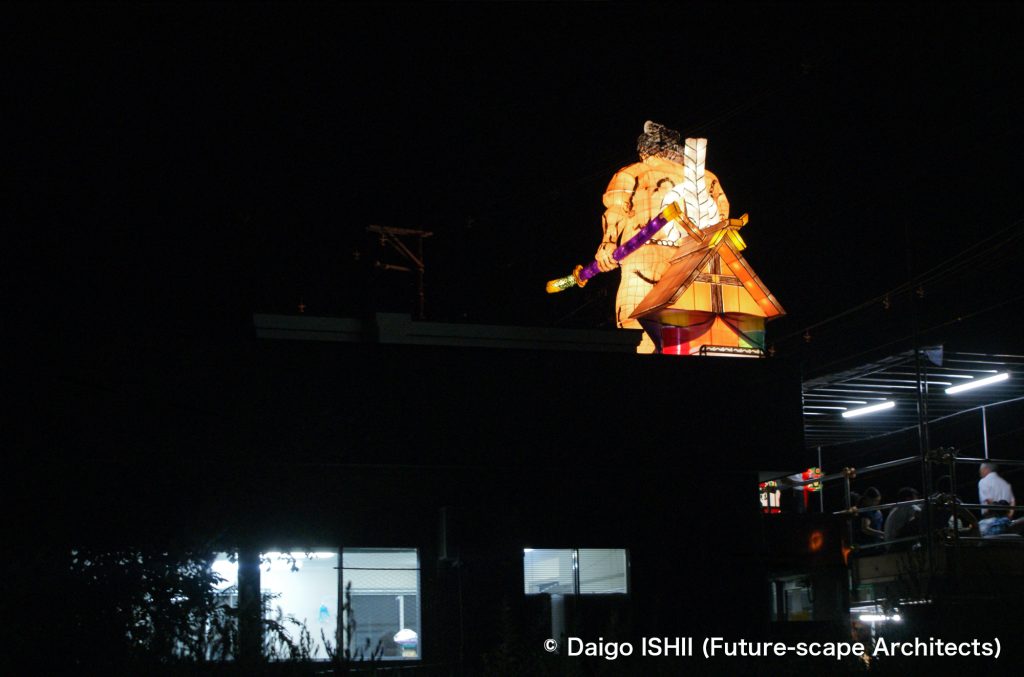
Click here for your impressions
When you want to know more → Traditional Festivals in Aomori : Tachi-Nebuta - 1 (Gosyogawara, Aomori, Japan)
When you want to know more → Traditional Festivals in Aomori : Tachi-Nebuta - 2 (Gosyogawara, Aomori, Japan)
reference
立佞武多の館のホームページ
五所川原高校のホームページ
五所川原農林高校のホームページ
さかえ立佞武多のホームページ
Wikipedia
Please do not use or upload our photos without permission.




